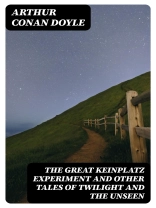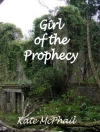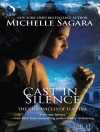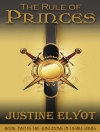In ‘The Great Keinplatz Experiment and Other Tales of Twilight and the Unseen, ‘ Arthur Conan Doyle invites readers into a realm where the boundaries of reality and the supernatural blur. This collection features stories that explore themes of psychic phenomena, spiritualism, and the enigmas of human consciousness. With an engaging narrative style, Doyle blends meticulous scientific inquiry and imaginative storytelling, presenting tales that are rich in psychological depth and moral introspection. The juxtaposition of rationalism and mysticism reflects the late Victorian fascination with the unknown, a context in which Doyle’s work frequently resided, often challenging the prevailing scientific paradigms of his time. Conan Doyle, primarily celebrated for his creation of Sherlock Holmes, was a man of diverse interests, from medicine to spiritualism. His own encounters with the occult and his advocacy for psychic research significantly informed the themes of this collection. The stories encapsulate his lifelong quest for understanding beyond the visible world, driven by both personal experiences and an underlying skepticism towards materialism, making these tales not just fictional narratives but also philosophical inquiries. Readers who relish the intersection of mystery and the metaphysical will find ‘The Great Keinplatz Experiment’ particularly rewarding. Doyle’s storytelling is both thought-provoking and captivating, inviting an exploration of the unseen forces that may shape our existence. This collection is essential for aficionados of gothic literature and those intrigued by the paranormal, positioning itself as a profound commentary on humanity’s eternal quest for knowledge.
Sobre o autor
Sir Arthur Conan Doyle (1859-1930) was an esteemed British writer and physician, widely acclaimed for his literary contributions that extended well into the realms of detective fiction, historical novels, and science fiction. His indelible creation, the astute detective Sherlock Holmes, bestowed within the pantheon of literary characters, endures as an archetype in investigative narratives. Yet, amongst his broad canon is a less-frequented opus, ‘The Great Keinplatz Experiment and Other Tales of Twilight and the Unseen, ‘ illustrating his adeptness in exploring the esoteric and supernatural. These tales, suffused with curiosity surrounding the paranormal and metaphysical, exhibit Doyle’s penchant for weaving suspense with the otherworldly, a tendency also perceptible in his spiritualist pursuits later in life. A literary chameleon, Doyle’s repertoire, inclusive of such works as ‘The Adventures of Sherlock Holmes’ and ‘The Lost World, ‘ typifies a polymathic approach to writing, spanning vivid character renderings and intricate plot machinations that secure his prominence within the annals of English literature. His influence persists, with scholars analyzing his work’s impact on detective fiction and storytelling at large. Doyle’s legacy, surpassing the boundaries of Baker Street, encapsulates a pioneering spirit reflective of a Victorian luminary with an insatiable zest for the unknown.












